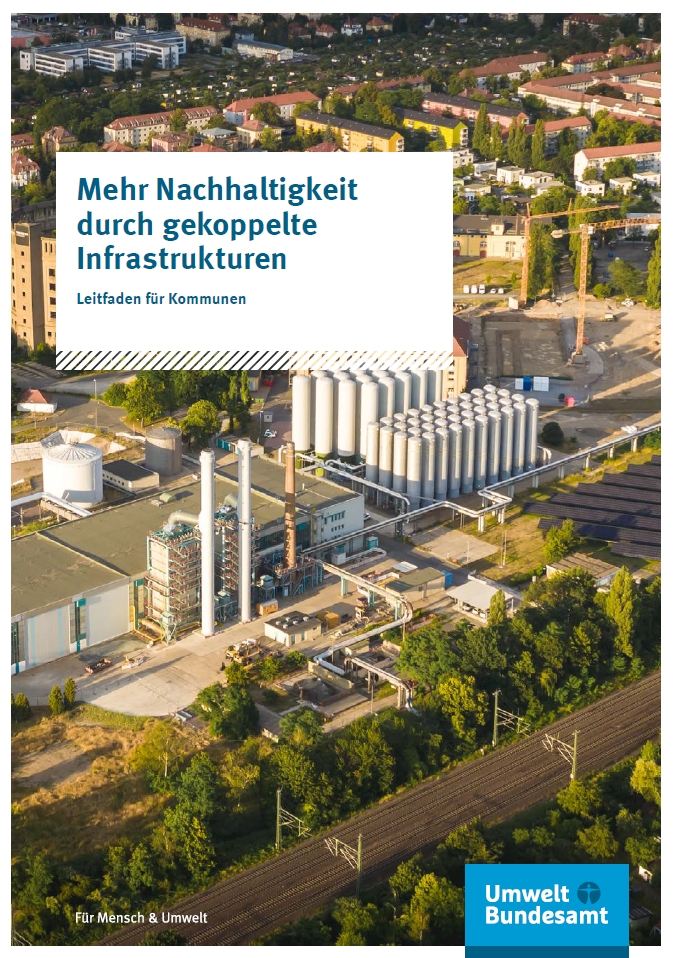Nachhaltigkeitspotenziale von innovativen, gekoppelten Infrastrukturen
- Publication
- Citation
Olfert, A., B. Brunnow, G. Schiller, J. Walther, M. Hirschnitz-Garbers, S. Langsdorf, K. Hölscher, J. M. Wittmayer (2020). Nachhaltigkeitspotenziale von innovativen, gekoppelten Infrastrukturen. Teilbericht des Vorhabens: "Transformation hin zu nachhaltigen, gekoppelten Infrastrukturen". UBA-Texte 99/2020, Umweltbundesamt, Dessau-Roßlau.
In the scope of the UBA project Transformation towards Sustainable, Coupled Infrastructures (TRAFIS), effects, processes and support options for the implementation of innovative infrastructure couplings were examined. The focus is on the water, wastewater, energy, transport, waste and information and communication technology (ICT) sectors.
This volume deals with the potential effects of innovative coupled infrastructures on performance, resilience, resource efficiency and social and economic viability. A sustainability concept including 26 criteria was developed and tested as a "sustainability check" in a Delphi-based approach with over 100 experts. The results of the evaluation show specific strengths and weaknesses of coupled infrastructure solutions. In summary, the following conclusions can be drawn:
- Infrastructure couplings have the potential to deliver the expected performance. By leveraging previously unused synergies, they can even achieve higher performance potentials than non-coupled systems. However, coupling often leads to significantly higher technical and organizational complexities of the infrastructure systems.
- The quality of infrastructure services is generally not impaired by coupling. In most cases, infrastructure interconnections are economically viable for providers. However, the changes often investments by the users incl. costumers – e.g. if building technology has to be adapted.
- For the infrastructure couplings under consideration, neutral to clearly positive effects on primary energy demand, total energy demand and greenhouse gas emissions are usually expected. Slightly negative effects are estimated with regard to demand for raw materials in general and critical raw materials. In some cases, land consumption increases significantly.
- Coupling of infrastructure systems can lead to new dependencies. However, infrastructure interconnections can also strengthen local or regional supply security by improving redundancy, modularity and buffering capacity of the systems.
The report is available for download.
